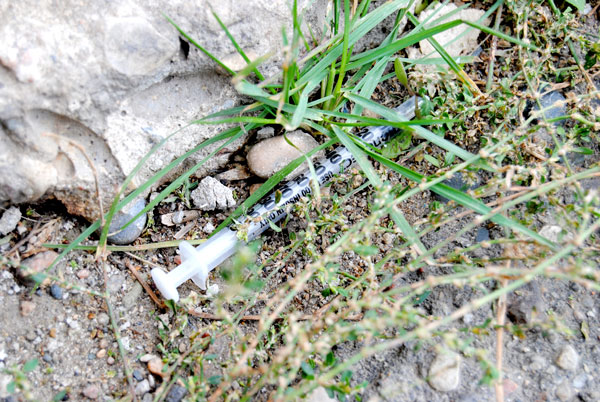Indigenous HIV rate about two times higher than provincial rate
Shauna-Rae Brahniuk says traditionally “people who have HIV are seen to be dirty or a walking disease or a death sentence”—that’s not the case anymore.
With World AIDS Day on Sunday to kick off Aboriginal AIDS Awareness Week, the Prince Albert Métis Women’s Association health educator is encouraging people to get tested and know their HIV status.
“People are very, very unaware that with the proper medication, people can be extremely healthy and live a long, normal life,” she said.
According to the Government of Canada, the human immunodeficiency virus (HIV) attacks the immune system. If left untreated, it can develop into Acquired Immunodeficiency Syndrome (AIDS).
Indigenous people, who make up 42 per cent of Prince Albert’s total population, have high rates of HIV.
According to Indigenous Services Canada, there’s been a decrease in HIV rates in First Nations communities in the past two years, although it’s still about two times higher than the overall provincial rate.
Brahniuk said this is partly because of the rural location of reservations.
“They don’t have access to all the proper medications, health care, as well as access to things like needles and pipes,” she said, adding the general stigma of the Indigenous population is a factor as well.
“A lot of the times when Aboriginal people come to Prince Albert, they’re…a little bit iffy to go to the healthcare services just because they’re almost already stigmatized. They don’t really want to go in and say ‘Hey, can you send me to get checked for HIV’ because then you’re viewed as being a lot less, and they’re already seen as less.”
However, Indigenous Services Canada says there’s been a 27 per cent increase in harm reduction programs by Saskatchewan’s First Nations partners from 2017 to 2018. About 6,500 HIV tests were performed in First Nations communities in 2018.
Last week was also AIDS Awareness Week. Brahniuk said there was a flag-raising at the Prince Albert Grand Council on Tuesday, where an elder held a ceremony and blessed the flag with sage to honour those living with HIV or who have passed away from the virus.
On Thursday, several people joined for an awareness walk starting at Memorial Square.
“It was a much, much bigger turnout than last year, that’s for sure. Each year it seems to (be) a little bit different,” said Brahniuk. She encouraged people to join next year in hopes of curbing the stigma surrounding HIV and AIDS.
She said HIV is most commonly transmitted through injection drug use, followed by sexual contact. HIV is not transmitted through healthy and unbroken skin, sharing food, kissing, hugging, shaking hands or mosquito bites.
Brahniuk said there’s been a huge advancement in medications for HIV.
While you used to have multiple medications and get quite sick from them, she said now usually you only have two medications with minimal side effects.
To get tested, Brahniuk said to go to the Access Place Sexual Health Clinic, your doctor, or to a walk-in clinic. Access Place also has a needle-exchange program, where you can properly dispose of a used needle for a new one.


